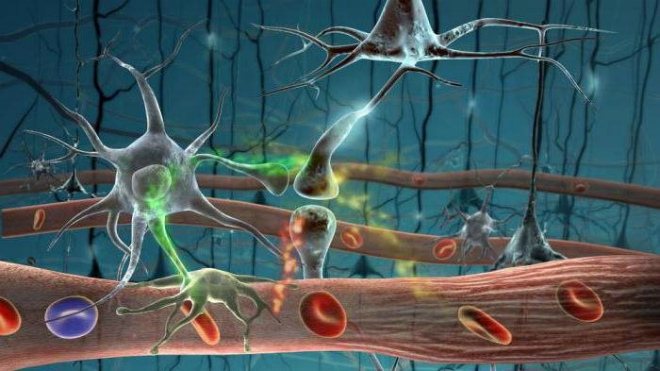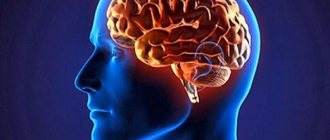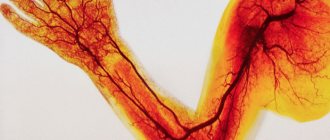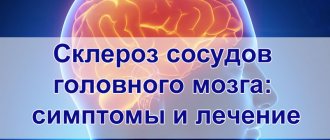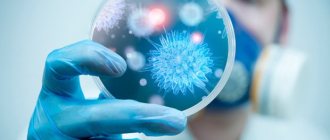This pathology implies a disorder of pressure in the vascular bed. Tonic disorders can affect both arteries and veins. Their main function is to maintain a stable position and pressure. These parameters are provided by vascular smooth muscle cells.
This pathological condition has many forms and types. This is due to the fact that vascular changes can affect any group of organs and their systems. The cerebral type is rightfully considered the most dangerous. It affects the vascular network of the brain, disrupts tone and causes characteristic symptoms.
Angiodystonia is not an independent disease. Basically, the pathological process plays a secondary role. All manifestations of this condition are associated with disorders of the tonic activity of blood vessels. The etiology, that is, the origin of such changes, may be different. The localization and mechanism of action are also often different.
Kinds
The diseases have different pathogenesis, localization and origin.
Accordingly, I classify the types of angiodystonia according to several main characteristics:
- Depending on the origin (primary/secondary, neurogenic/symptomatic form).
- According to the location of the lesion (local/systemic angiodystonia).
- Depending on the nature and severity of the disease (permanent, etc.).
- According to the value of blood pressure indicators (hypertensive/hypotensive/mixed).
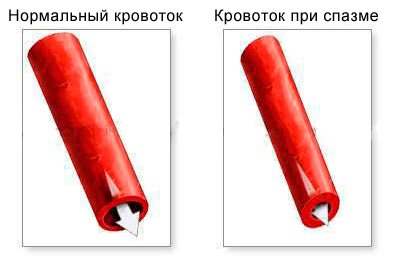
Normal blood flow and in case of disturbance
Symptoms
With angiodystonia, the functionality of blood veins and arteries is significantly reduced, as a result of which circulatory disorders occur. The signs of the disease are quite different, so it is often impossible to identify pathology based only on the patient’s complaints.
There are several criteria by which all symptoms of angiodystonia can be divided into groups:
- Manifestations of asthenic nature.
- Respiratory symptoms.
- Attacks of angina.
- Cerebrovascular syndromes.
- Manifestations of a mental type of education.
- Neurogastrological signs.
The most characteristic and common symptoms include the following:
- Severe headaches, migraines, dizziness.
- Arterial hypotension.
- Numbness or swelling of the arms and legs.
- Muscle aches.
- Arterial hypertension.
- Pain in the left side of the chest at rest or during physical activity. Loads that appear in paroxysms (cardialgia).
- The pulse quickens/slows down (tachycardia/bradycardia of the heart) at rest or during minor physical exercise. loads
- There is noise in the ears.
- Problems with sleep (insomnia appears).
- Vision and touch deteriorate.
- Frequent depression and hysterics appear for no particular reason.
- Problems concentrating.
- It's hard to breathe. Shortness of breath may occur at rest.
The appearance of a headache that occurs after minor activity, at rest, or even at any time of the day is considered the main symptom of this disease.
As a rule, the most uncomfortable sensations are concentrated in the temples or on the back of the head, and go from aching to sharp, pressing and intense. Against the background of this symptom, depression may appear, which can affect the patient’s performance.
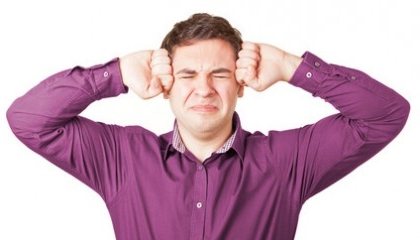
Headaches are the most painful symptom of angiodystonia
When can angiodystonia occur in the brain?
This pathology is not a separate disease. As a rule, it occurs against the background of some underlying disease. It can be:
- Hormonal disorders in the body as a result of diseases of the endocrine glands (adrenal glands, thyroid gland, ovaries, pituitary gland, hypothalamus).
- Autonomic dysfunctions.
- Foci of chronic infection in the body (caries, chronic tonsillitis, sinusitis, pyelonephritis, cystitis, etc.).
- Acute and chronic diseases of internal organs (vascular atherosclerosis, peptic ulcer, pancreatitis, colitis, amyloidosis, hepatitis).
- Traumatic brain injuries, bruise or concussion, multiple sclerosis.
- Insufficient physical activity of the patient (hypodynamia).
- Personality disorders (increased anxiety, fear, suspiciousness, irritability).
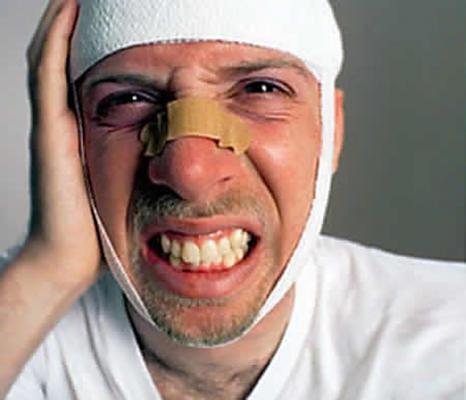
Symptoms and signs of cerebral angiodystonia:
- Headache of various nature and localization. Most often, this pain is pulsating or pressing in nature, located either in the temporal or occipital regions. Headache may be accompanied by dizziness and loss of consciousness.
- Changes in blood pressure numbers. This may be a symptom of an underlying disease (hypertension, vascular atherosclerosis), which led to angiodystonia.
- Heart rhythm disturbances (arrhythmias, interruptions in heart function), sometimes pain in the heart area. These symptoms may be accompanied by numbness of the limbs, pain in the neck, thoracic spine and back.
- A group of symptoms reflecting oxygen starvation of the brain - weakness, fatigue, drowsiness, pre-fainting.
- Decreased visual acuity, periods of darkening of the eyes.
- Memory impairment.
- Sleep disorders (insomnia, restless or interrupted sleep).
Cerebral angiodystonia
Cerebral angiodystonia is localized in the vessels of the cranium (brain).
Among the symptoms that signal the appearance of this pathology are the following:
- The appearance of rapid fatigue even with minor physical exercise. loads
- Severe headaches, dizziness.
- Coordination problems.
- Deterioration of vision.
- Tinnitus and others.
In most cases, cerebral angiodystonia of cerebral vessels is formed not only in connection with some concomitant diseases, but also the patient’s incorrect (unhealthy) lifestyle. This fact must also be taken into account when undergoing treatment.
Blood flow to the brain is significantly worsened by consuming fatty and high-calorie foods, alcohol or smoking. Quite often, changes in the patient’s lifestyle can relieve a number of some signs of the disease or even speed up the recovery process.
According to static data, in most cases the cause of head pain in young people and even schoolchildren is cerebral angiodystonia.
As a rule, if the disease is diagnosed in children at an early age, it can be completely cured without any complications. But as your child grows up, it is necessary to undergo a preventive examination with a doctor from time to time.
Most experts tend to attribute this pathology more to concomitant diseases (in the form of allergies, migraines, etc.) rather than as a separate independent disease.
Treatment of angiodystonia
Angiodystonia is treated conservatively. Treatment should be comprehensive and individually selected. The basis of treatment is therapy of the underlying or underlying disease. Drug treatment depends on symptoms.
One patient is prescribed antispasmodics to relieve arterial spasm, while another needs to influence tachycardia or normalize blood pressure. If you are prone to depression, magnesium drugs or antipsychotics can be used. Properly selected antipsychotics will relieve stress and normalize sleep, and help cope with mood swings. You cannot select neuroleptics on your own.
Along with drug treatment, it is necessary to change your lifestyle:
- rejection of bad habits;
- ensure adequate sleep;
- engage in physical therapy with moderate physical activity;
- pay attention to walking;
- ensure a diet with limited carbohydrates, fats and sufficient consumption of fruits and vegetables.
Treatment of retinal vascular pathology may include drugs that improve microcirculation (Trental, Mildronate, etc.), physiotherapy (magnetic therapy, acupuncture), local treatment in the form of eye drops that relieve arterial spasm. In some cases, laser vision correction is possible.
In addition to treatment prescribed by a doctor, you can use traditional recipes, provided there are no allergies.
Source: headcure.ru
Diagnostics
Since the symptoms manifest themselves in a complex manner, cerebral angiodystonia of the cerebral vessels is diagnosed quite simply. The effectiveness and success of treatment directly depend on the timely detection of pathology and the separation of clinical symptoms from psychosomatic ones.
Diagnosis of angiodystonia includes a number of procedures:
- Examination of the condition of blood vessels using roencephalography.
- Carrying out ultrasound examination of blood vessels.
- To examine the dynamics of the disease, an electrocardiogram (ECG of the heart) is performed.
- Electroencephalography is used to study brain activity.
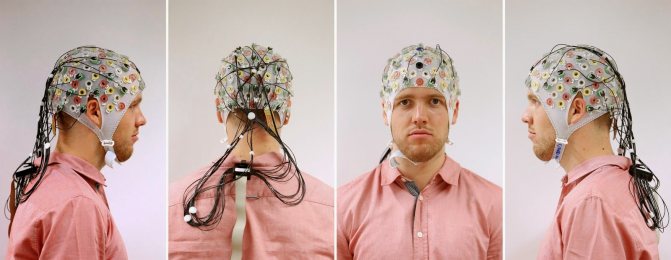
After identifying the integrity of the clinical picture of the disease, the doctor will prescribe appropriate treatment and give several instructions for planning a special diet. But since this pathology is exclusively a concomitant disease, it is recommended to direct the main efforts to cure the underlying disease.
Diagnosis of the disease
If cerebral angiodystonia is not treated, encephalopathy (dystrophic changes in brain tissue) may develop. In order to begin proper treatment, it is necessary to conduct a diagnosis.
Laboratory and instrumental methods used to diagnose the disease:
- Complete blood test (for the presence of infection or allergy).
- Blood test for hormones (for the presence of hormonal abnormalities).
- ECG (electrocardiogram), which will determine disturbances in the functioning of the heart.
- REG (rheoencephalogram), with its help, the tone of blood vessels and the elasticity of their walls are assessed.
- EEG (electroencephalography) reveals the reactivity of blood vessels and their blood supply.
- Ultrasound (ultrasound examination) shows the diameter of blood vessels and their narrowing.
- Dopplerography evaluates the speed of blood flow in the vessels and their deformation.

Based on the examination results, the doctor differentiates symptoms from other nervous disorders, makes a diagnosis and prescribes treatment.
Treatment
The treatment method for this disease is primarily aimed at normalizing blood flow and vascular tone. Thanks to this method, the patient will be able to get rid of several unpleasant symptoms that are accompanied by the disease.
Treatment of cerebral angiodystonia of cerebral vessels is developed for each patient individually, taking into account the underlying disease.
Drug treatment is prescribed exclusively by your attending physician. In cases where the therapy for this pathology is contradictory to the method of treating the underlying disease, then it is better to abandon it.
Reasons for the development of pathology
The reasons that lead to such a serious illness are different. Considering the nature of the disease and the disorders that gradually appear, doctors distinguish symptomatic and primary forms of angiodystonia. In most cases, negative changes in blood vessels that affect the tone of veins and arteries are secondary and symptomatic. Basically, this pathology is provoked by another serious disease. By the way, in this case, treatment should be aimed primarily at the primary ailment, and then treat cerebral dystonia. Vascular pathologies can develop against the background of diseases of the endocrine and autonomic systems. Most often this is a consequence of atherosclerotic processes in the brain.
Doctors identify a number of factors that can provoke a disease such as cerebral angiodystonia of cerebral vessels. Firstly, this may be due to hormonal imbalances, which are caused by problems in the functioning of the endocrine system. Secondly, problems with blood vessels are in some cases associated with disorders of the autonomic nervous system. Thirdly, amyloidosis can also cause similar pathologies. In some cases, the problem is pancreatitis, when inflammatory processes develop in the pancreas. This can also cause cerebrovascular disease. In some cases, the problem is related to other organs of the gastrointestinal tract.

If there are infectious foci in the body, then they must be treated so that they do not develop into chronic forms. Some diseases of the central nervous system also cause secondary pathologies with arteries and veins. This pathological phenomenon is strongly associated with blood vessels. Sometimes brain injuries (for example, concussions) also cause angiodystonia as a complication. By the way, most often the pathology is of the hypertensive type. If a person leads a sedentary, inactive lifestyle, then angiodystonia can gradually develop, so you definitely need to play sports or at least take a walk every day.
Very often, varicose veins can cause such an unpleasant complication in the brain. The same goes for Addison's disease. If increased intracranial pressure is observed frequently, then angiodystonia may be of the hypertensive type. With extensive smoking experience, such side effects are also possible. Spondylosis is also dangerous. Also, angiodystonia may appear due to menopause or certain characteristics of the body. For example, this concerns constant anxiety, irritability, and suspiciousness. By the way, external factors can also adversely affect the body and cause such a complication. For example, this applies to poor nutrition.
Folk remedies
In order to improve your condition, you can use the following folk remedies for blood vessels and methods for angiodystonia:

Valerian decoction
- In order to normalize your tone, you need to completely reconsider your diet and lifestyle. It is necessary to give up bad habits (alcohol, smoking, etc.), try to walk more in the fresh air, play sports, alternate between rest and work.
- To improve overall well-being, decoctions and tinctures of valerian, knotweed (knotweed) and motherwort are wonderfully suitable.
Angiodystonia of cerebral vessels and treatment
Therapy for angiodystonia is mainly medicinal. The drugs of choice include:
- Vasoactivators such as Clonidine, Methyldopa and Propranolol;
- Painkillers like Pentalgin or Ketonal;
- Sedatives “Corvalol” and “Persen”, “Tenoten”, “Seduxen” or “Novo-Passit”;
- Sleeping pills "Melaxen" or "Donormil";
- Hypotonic like “Captopril” and “Bisoprolol”;
- Antidepressants Amitriptyline and Flucosetine;
- Antiari and "Diltiazem";
- Cerebral circulation stimulants - Piracetam and Pentoxifylline, Pantogam or Vinpocetine;
- Vitamin complexes and antioxidants;
- Vascular eye drops - “Taufon” or Mildronate.”
In addition to basic remedies, it is recommended to treat with additional folk methods in the form of herbal medicine - infusions and herbal preparations. Exercise therapy, special baths, massage, electrophoresis help bring vascular tone back to normal.
